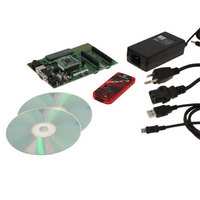DV164136 Microchip Technology, DV164136 Datasheet - Page 95

DV164136
Manufacturer Part Number
DV164136
Description
DEVELOPMENT KIT FOR PIC18
Manufacturer
Microchip Technology
Series
PIC®r
Type
MCUr
Datasheets
1.DM183032.pdf
(38 pages)
2.DV164136.pdf
(448 pages)
3.DV164136.pdf
(6 pages)
4.DV164136.pdf
(446 pages)
5.DV164136.pdf
(4 pages)
6.DV164136.pdf
(18 pages)
Specifications of DV164136
Contents
Board, Cables, CDs, PICkit™ 3 Programmer, Power Supply
Processor To Be Evaluated
PIC18F8722, PIC18F87J11
Interface Type
RS-232, USB
Operating Supply Voltage
3.3 V, 5 V
Silicon Manufacturer
Microchip
Core Architecture
PIC
Core Sub-architecture
PIC18
Silicon Core Number
PIC18F
Silicon Family Name
PIC18F8xxx
Kit Contents
PIC18 Exp Brd PICkit 3 Cable CD PSU
Lead Free Status / RoHS Status
Lead free / RoHS Compliant
For Use With/related Products
PIC18F8722, PIC18F87J11
Lead Free Status / Rohs Status
Lead free / RoHS Compliant
Available stocks
Company
Part Number
Manufacturer
Quantity
Price
Company:
Part Number:
DV164136
Manufacturer:
MICROCHIP
Quantity:
12 000
- DM183032 PDF datasheet
- DV164136 PDF datasheet #2
- DV164136 PDF datasheet #3
- DV164136 PDF datasheet #4
- DV164136 PDF datasheet #5
- DV164136 PDF datasheet #6
- Current page: 95 of 448
- Download datasheet (8Mb)
6.5
The programming block is 32 words or 64 bytes.
Programming one word or two bytes at a time is also
supported.
Table writes are used internally to load the holding
registers needed to program the Flash memory. There
are 64 holding registers used by the table writes for
programming.
Since the Table Latch (TABLAT) is only a single byte, the
TBLWT instruction may need to be executed 64 times for
each programming operation (if WPROG = 0). All of the
table write operations will essentially be short writes
because only the holding registers are written. At the
end of updating the 64 holding registers, the EECON1
register must be written to in order to start the
programming operation with a long write.
The long write is necessary for programming the inter-
nal Flash. Instruction execution is halted while in a long
write cycle. The long write will be terminated by the
internal programming timer.
FIGURE 6-5:
6.5.1
The sequence of events for programming an internal
program memory location should be:
1.
2.
3.
4.
5.
6.
7.
© 2009 Microchip Technology Inc.
TBLPTR = xxxxx0
Read 1024 bytes into RAM.
Update data values in RAM as necessary.
Load Table Pointer register with address being
erased.
Execute the row erase procedure.
Load Table Pointer register with address of first
byte being written, minus 1.
Write the 64 bytes into the holding registers with
auto-increment.
Set the WREN bit (EECON1<2>) to enable byte
writes.
Writing to Flash Program Memory
FLASH PROGRAM MEMORY WRITE
SEQUENCE
Holding Register
TABLE WRITES TO FLASH PROGRAM MEMORY
8
TBLPTR = xxxxx1
Holding Register
8
Program Memory
TBLPTR = xxxxx2
Write Register
TABLAT
PIC18F87J11 FAMILY
The on-chip timer controls the write time. The
write/erase voltages are generated by an on-chip
charge pump, rated to operate over the voltage range
of the device.
8.
9.
10. Write 0AAh to EECON2.
11. Set the WR bit. This will begin the write cycle.
12. The CPU will stall for duration of the write for T
13. Re-enable interrupts.
14. Repeat steps 6 through 13 until all 1024 bytes
15. Verify the memory (table read).
An example of the required code is shown in
Example 6-3 on the following page.
Note:
Holding Register
Note 1: Unlike previous PIC18 Flash devices,
Disable interrupts.
Write 55h to EECON2.
(parameter D133A).
are written to program memory.
2: To maintain the endurance of the program
8
Before setting the WR bit, the Table
Pointer address needs to be within the
intended address range of the 64 bytes in
the holding register.
members of the PIC18F87J11 family do
not reset the holding registers after a
write occurs. The holding registers must
be cleared or overwritten before a
programming sequence.
memory cells, each Flash byte should not
be programmed more than one time
between
attempting to modify the contents of the
target cell a second time, a row erase of
the target row, or a bulk erase of the entire
memory, must be performed.
erase
TBLPTR = xxxx3F
operations.
Holding Register
DS39778D-page 95
8
Before
IW
Related parts for DV164136
Image
Part Number
Description
Manufacturer
Datasheet
Request
R

Part Number:
Description:
Manufacturer:
Microchip Technology Inc.
Datasheet:

Part Number:
Description:
Manufacturer:
Microchip Technology Inc.
Datasheet:

Part Number:
Description:
Manufacturer:
Microchip Technology Inc.
Datasheet:

Part Number:
Description:
Manufacturer:
Microchip Technology Inc.
Datasheet:

Part Number:
Description:
Manufacturer:
Microchip Technology Inc.
Datasheet:

Part Number:
Description:
Manufacturer:
Microchip Technology Inc.
Datasheet:

Part Number:
Description:
Manufacturer:
Microchip Technology Inc.
Datasheet:

Part Number:
Description:
Manufacturer:
Microchip Technology Inc.
Datasheet:











